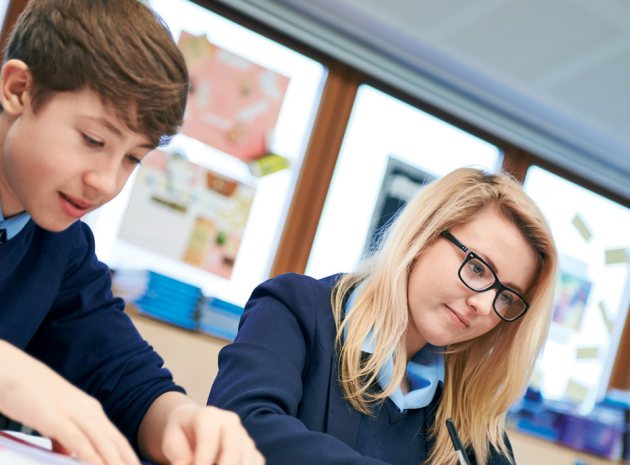Encouraging students to analyse the presentation of newpaper articles can help them make leaps of understanding about non-fiction writing, says Priya Rudhun-Imrith…
Why teach this?
Teaching non-fiction can be tricky in the way students easily slip into description rather than analysis. Developing a range of activities for this lesson allowed students of all abilities to be engaged and stretched as a lot of independent thinking was involved, combined with paired and group work – making learning dynamic and less teacher led. Students took ownership of the task and this led to structured discussions, enabling the more able ones to formulate detailed analysis with technical accuracy while also allowing the lower ability students to engage with the task and work collaboratively boosting their confidence overall. The feedback received were very positive where the teacher becomes the mere facilitator and the students run the lesson. It’s brilliant and has provided the results!
This lesson was used with a mixed ability Year 7 class studying the “Non Fiction Unit” in preparation for the Summer Reading Exam. Students find studying Language in Media interesting and the focus of the lesson is not to simply identify, but to infer and deduce from the text to show how the target audience is addressed. Young people tend to be familiar with the technical terms but not always able to understand fully how they affect meaning, so they tend to describe generally, hence the aim of this lesson is to explore meaning.
The lesson aims to look closely at a newspaper article, where students will be asked to identify language and presentational features that support meaning in non-fiction text. The learning strategies will include visual, auditory, paired, class discussion and individual written tasks. This unit is cross-curricular in how the students are taught technicalities of media language, which makes a direct link to media studies and advertising. Equally, this could be useful for design when focussing on page layout using software such as InDesign.
Starter activity
Invite students to make a list of presentational features they would expect to see in news articles. These might include slogans, headlines, captions, subheadings, font, logos, pictures, diagrams and paragraphs. These answers should be shared in order to provoke class discussion.
Next, students reinforce their learning by identifying those features using visual stimulus. This might include showing them images of logos for popular brands such as Nike, Subway, Tesco and MaXfactor, or articles that have subheadings, captions or varying font. Then a mix and match activity is introduced, where students are asked to match language features to their definitions.
Main activities
Students will need to be organised into pairs for this part of the lesson. Each group will require some paper and pencils or a mini-whiteboard and pen. I would also advise that they are of mixed ability to assist weaker students. They are given an article from the Daily Mirror called ‘Furever Friends’ to examine, and look for presentational features in the text. They then move on to looking for the language features of the piece; the answers should be shared with the class so students can see those they may not have identified themselves.
Students then look at a scaffold example of how to structure a PEE paragraph. The scaffold example is an example of differentiation that includes starter sentences to help students begin the task. This allow students to reflect on the aim of being more evaluative than descriptive.
They are then asked to write their own PEE paragraph with the useful phrases and words from the list; this also involves them analysing the effectiveness of the picture as well as the language in the headline.
Home learning
The exam question (see ‘summary’, right) could be set as homework if you want to spend time in the plenary reviewing how well the students thought that the lesson went. An alternative suggestion for homework could be finding an article from The Guardian and comparing it with an article from the Daily Mirror, analysing the similarities and differences between the two texts. Students could also print the articles and annotate the different presentational devices found and explain in text boxes how effective they are in supporting meaning. In addition, students could be asked to show their work to the class in a two-minute presentation, with the most original one having the opportunity to write an article for the school newsletter and earning house points.
Summary
After each activity, or at the end of the whole session, you can use traffic lights to see how well each student feels that he/she understands the features and structures discussed (I tend to ask students to use thumbs up/to the side/down to show their level of understanding). Those who are unsure or do not have a complete grasp can be asked what aspects they do understand, and which aspects they are unsure of. Then a student who feels confident about understanding the structure can be asked to explain the relevant points to the class. This enables you as a teacher to see the level of understanding across the class. I find peer assessment especially useful at this point; students exchange their PEE paragraph with their partner and will use a checklist provided to assess their work. Some answers will be read in class and students will be asked to identify WWW and EBI. Finally, a past exam question (or one you set yourself), based on how picture and language article headlines add to the effectiveness of the text could be set. This can then be collected in and marked to see how much the students have learnt and whether they can apply this learning.
About our expert
Priya Rudhun-Imrith is head of English at All Saints Secondary School, Dagenham. She has over 14 years’ teaching experience in English and Media Studies, and describes All Saints as “a brilliant school with the greatest satisfaction being the students who are willing to learn making teaching interesting, engaging and interactive.”









